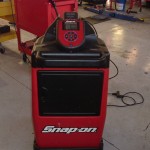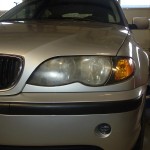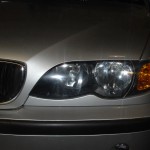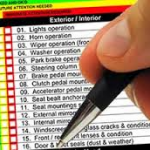With winter driving conditions upon us it is prudent for drivers to take the time to make sure their vehicles are in shape and ready for winter driving conditions. Cold temperatures, icy and snowy conditions can increase your chances of mechanical breakdowns and also require an extra measure of safety while driving. Here are some tips to keep your travels trouble free!
- Tune up – Make sure your vehicle is in top running condition. If you haven’t had a tune up in a while you may be due. Colder temperatures can put extra stress on tune up components that are due to be replaced.
- Check your battery and charging systems – Both extreme cold and heat are the leading instigators of battery failure. Batteries and charging systems that are weak will rear their ugly head at the first sign of cold temperatures
- Antifreeze – be sure to have your antifreeze checked and topped off. It should be checked not only for temperature protection level but also ph. The latter will have an effect on the corrosion factor in your engine components. Normal “green” type antifreeze should be flushed every two years and long life coolant should be flushed every 5 years or 60,000 miles
- Heater, defroster and windshield wipers should all be functioning properly. Wiper blades last anywhere from one to two years at most. Also make sure your windshield washers are working properly and filled with an antifreeze type washer fluid. Lots of road spray and film will be constantly thrown on your windshield while driving.
- Have a general safety check done which includes but not limited to brakes, belts, hoses, and lights. If your headlights seem dim you may have clouded lenses. Many auto professionals offer a headlamp lens restoration that will improve your night time vision and at a substantial savings over new headlamp lenses.
- Tires – make sure you have adequate tread depth and if you will be in snowy conditions you should have snow or winter driving tires. If you need studded tires consider the new stud less tires which have less negative impact on roads. Be sure to have the tire manufacturers recommended inflation pressure.
- Exhaust – check your exhaust system for leaks. With the windows rolled up you are at higher risk for carbon monoxide poisoning from exhaust leaks seeping into the cab.
Taking a trip?
Drivers should check the tire pressure of the spare in the trunk and stock an emergency kit with an ice scraper and snowbrush, jumper cables, flashlight, flares, blanket, extra clothes, candles/matches, bottled water, dry food snacks and needed medication.
Taking these necessary precautions will not only give you peace of mind but also help to preserve the life of your car.





0 Comments